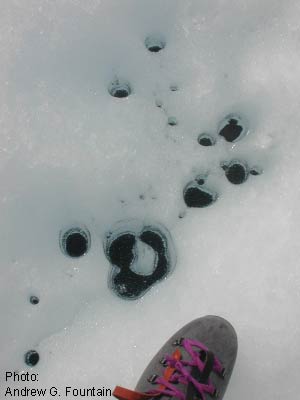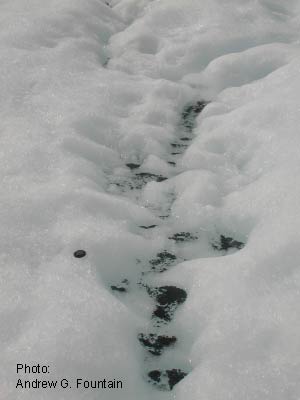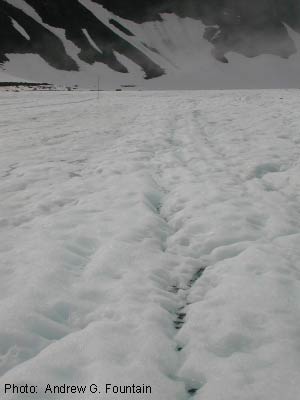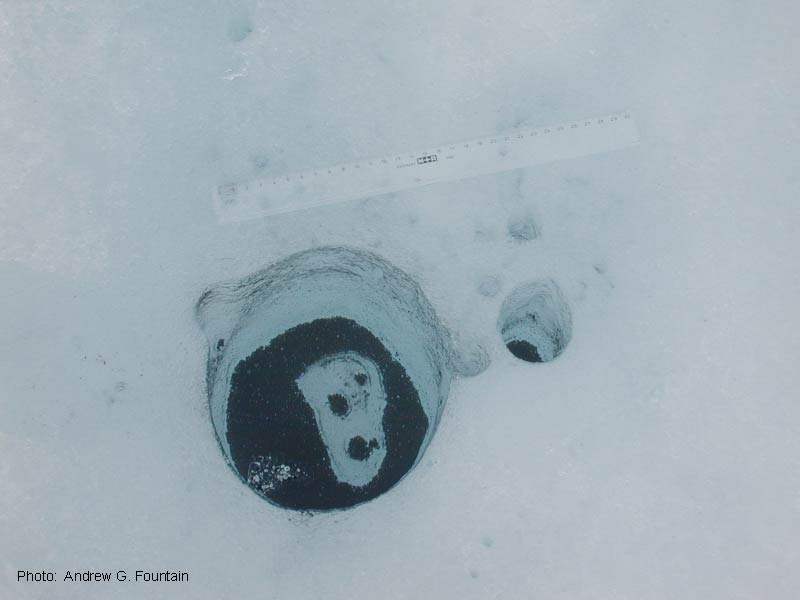


The cryoconite holes on Storglaciären, Sweden
Storglaciären is a polythermal glacier with a surface layer of ice ~40m thick that is a few degrees below freezing. Below this surface layer the ice is at its melting temperature. The cryoconite holes form on the ice surface where the temperatures reach melting. The holes are part of the surface water system. As the ice melts it flows over the ice surface is shallow streams and the cryoconite holes are part of the this system. The melt water flows into and out of the holes exchanging the hole waters with that of the stream.



The scene zooms to a larger view. The first
photo shows the small water-filled depressions, perhaps 5 cm deep with
cryoconite
at the bottom. The next view show how the holes are aligned forming a part
of a stream channel on the glacier surface. The
round black disk to the left of the channel is a 2.5 cm diameter lens cap to a
camera. The third and final photo shows a view of
the area with the cryoconite in the channel in the foreground.

This is an enlargement of the photograph on the
main cryoconite page. This hole is not part of the surface
stream network. Note the circular geometry of the hole and near vertical
walls. A smaller hole is off to the
right. The rule is marked at every centimeter.